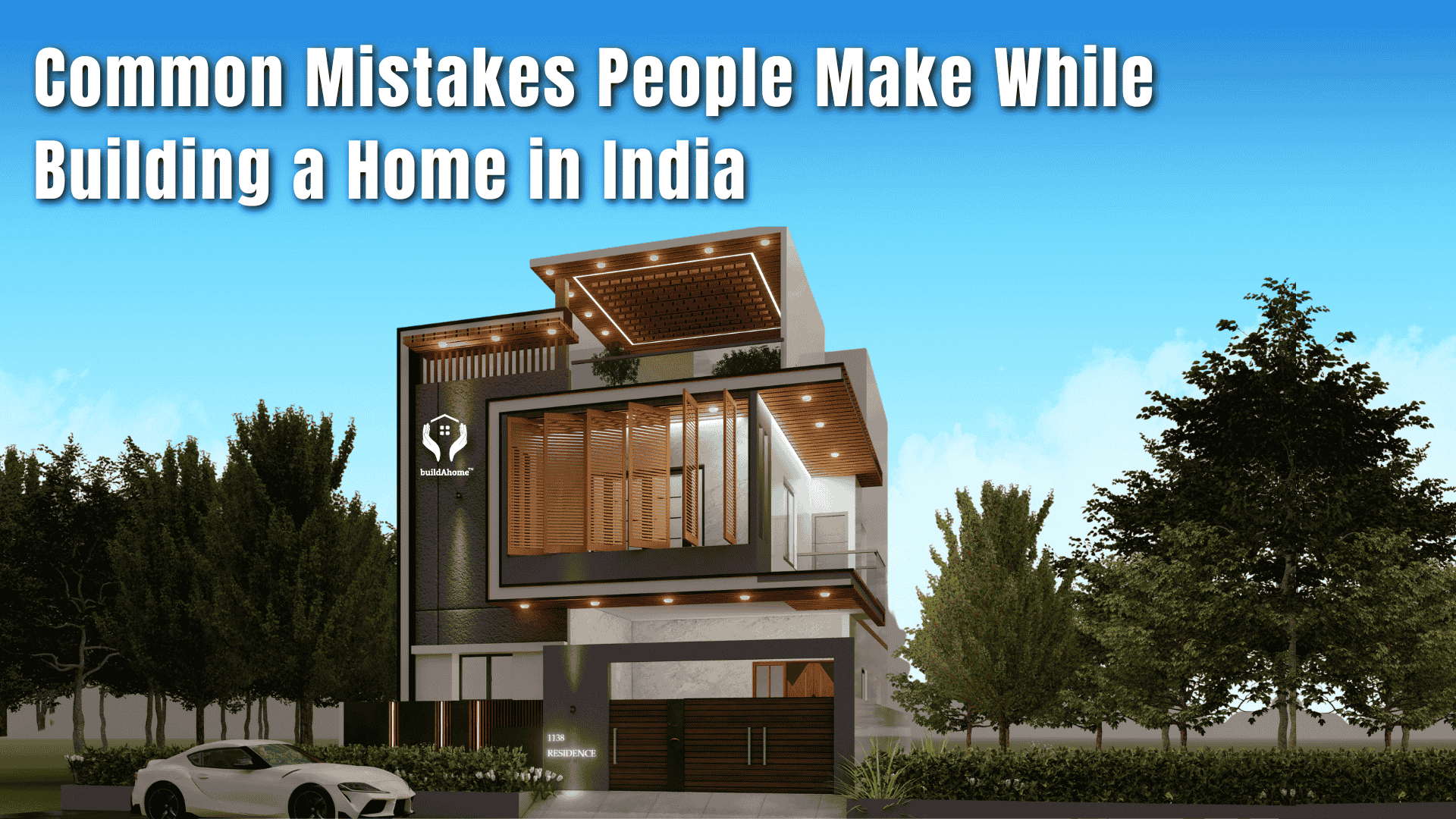Building your own house is one of life’s biggest milestones — a mix of excitement, emotion, and endless decisions. Especially in cities like Bengaluru, Mysore, Chennai, Coimbatore, where every square foot matters, the process can quickly shift from dream to dilemma if things aren’t planned right.
Here are some common mistakes people make while building a home in India, and a few ways to avoid them — so that the journey stays as joyful as the destination.
1. Starting Construction without a Clear Plan
One of the most common and costly mistakes is beginning construction without a complete plan. Many homeowners start work after a rough sketch, assuming they’ll “decide on the go.” That approach almost always leads to confusion, material wastage, and unexpected delays.
Before starting, make sure you have a detailed floor plan, structural design, budget estimate, and a timeline ready. A well-laid plan keeps everyone — from your contractor to your electrician — on the same page.
2. Ignoring Soil Testing and Site Conditions
This might sound technical, but soil testing is essential. The kind of soil your plot sits on determines the strength of your foundation. In Bengaluru, for example, red soil, clayey soil, and rocky layers can all exist within a few kilometres of each other.
Skipping soil testing can lead to cracks or dampness later, which are expensive to fix. A simple soil report at the start helps your structural engineer design the right type of footing for your home.
3. Overlooking Legal Clearances
Many people get caught up in the excitement of starting construction and forget about documentation. But approvals from BBMP, BDA, or local panchayats, as well as setback and FAR regulations, are non-negotiable.
Starting construction without proper permissions can lead to stop-work notices or penalties — and even delays in getting your occupancy certificate later. It’s worth hiring a liaison or architect familiar with your city’s approval process to handle this early on.
4. Choosing a Contractor Based on the Lowest Quote
This one’s tricky. Everyone wants to save money, but going with the cheapest contractor often costs more in the long run. Low quotes may mean compromises on material quality, unskilled labour, or lack of site supervision — all of which affect your home’s durability.
Instead, compare experience, visit previous sites, talk to past clients, and review contracts carefully. Transparent construction services — like buildAhome — make this process simpler by offering clear pricing, timelines, and accountability. Studying their approach gives you a fair idea of what transparency in construction should look like.
5. Skimping on Material Quality
Cutting costs on cement, steel, or waterproofing might feel smart initially, but these are what keep your home strong. Poor-quality materials lead to cracks, damp walls, and constant maintenance headaches later.
Opt for trusted brands and ensure your contractor follows curing and waterproofing best practices — especially with South India’s mix of heavy monsoons and strong summers.
6. Poor Design for Ventilation and Natural Light
Your home’s comfort doesn’t just depend on its looks. South Indian homes, in particular, benefit from good cross-ventilation, skylights, and large windows to handle the warm climate.
Think beyond aesthetics — plan window placement, ventilation shafts, and open courtyards early. A well-ventilated house not only feels fresher but also saves on cooling costs over time.
7. Not Thinking About Future Needs
It’s easy to design for “today” and forget “tomorrow.” Maybe your parents will move in later, or you’ll need space for a home office or a lift. Keep flexibility in mind — plan your layout so that you can easily expand or modify it later without major structural changes.
Also, keep an eye on sustainability — rainwater harvesting, solar panels, and low-flow fixtures are worth planning from day one.
8. Lack of Regular Site Supervision
Even a good plan can go wrong if no one checks the site regularly. Many issues like wrong measurements, poor plastering, or leakage-prone joints happen simply due to lack of supervision.
In a Nutshell
Building a home in India is equal parts passion and patience. With proper planning, quality materials, and the right team, the process can be far smoother — and the outcome, something you’ll cherish for generations.
So, take it slow, plan it right, and build it once — the right way. After all, this isn’t just construction; it’s the story of your dream taking shape, brick by brick.



